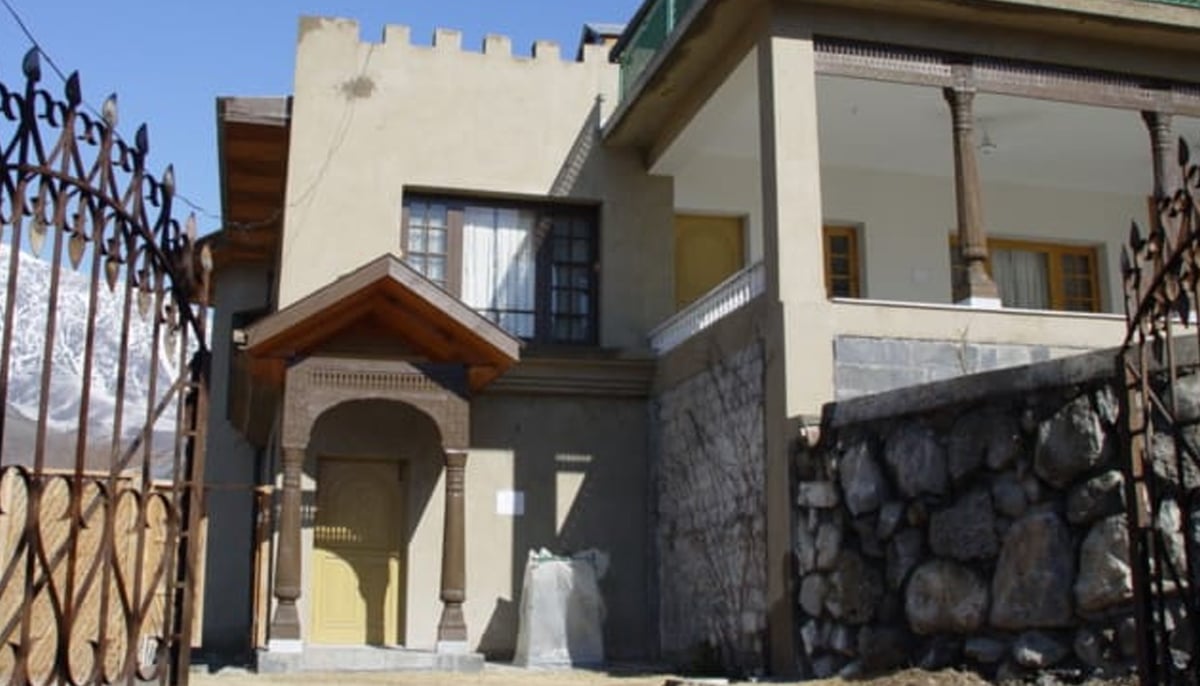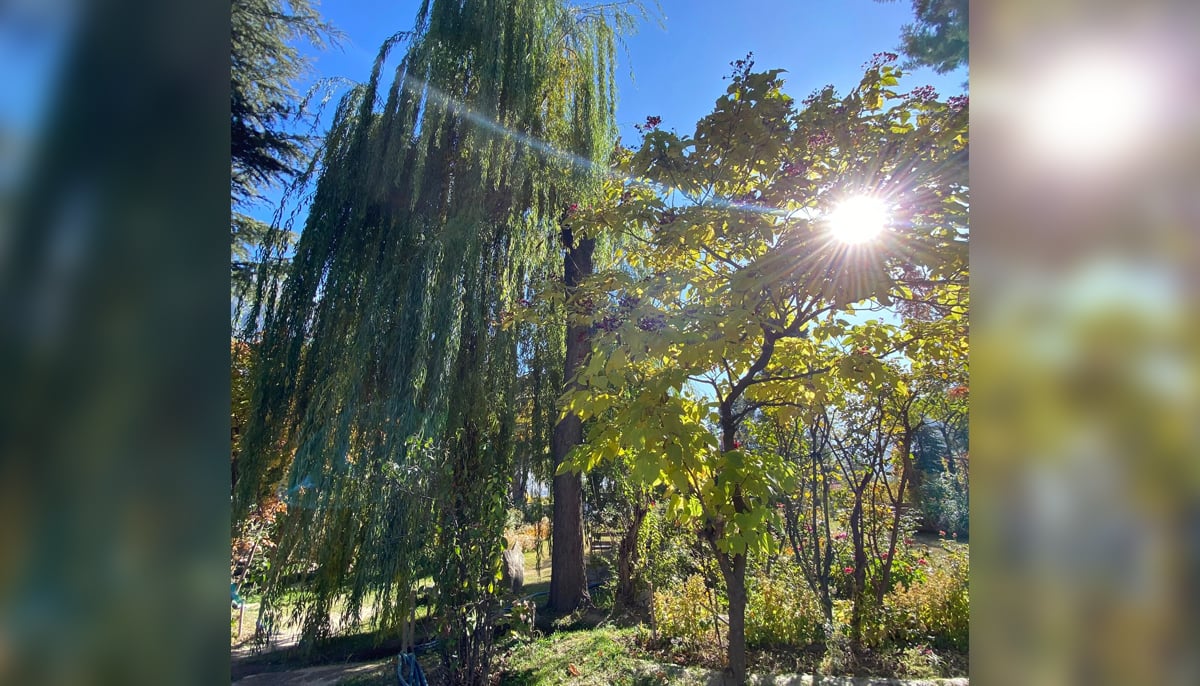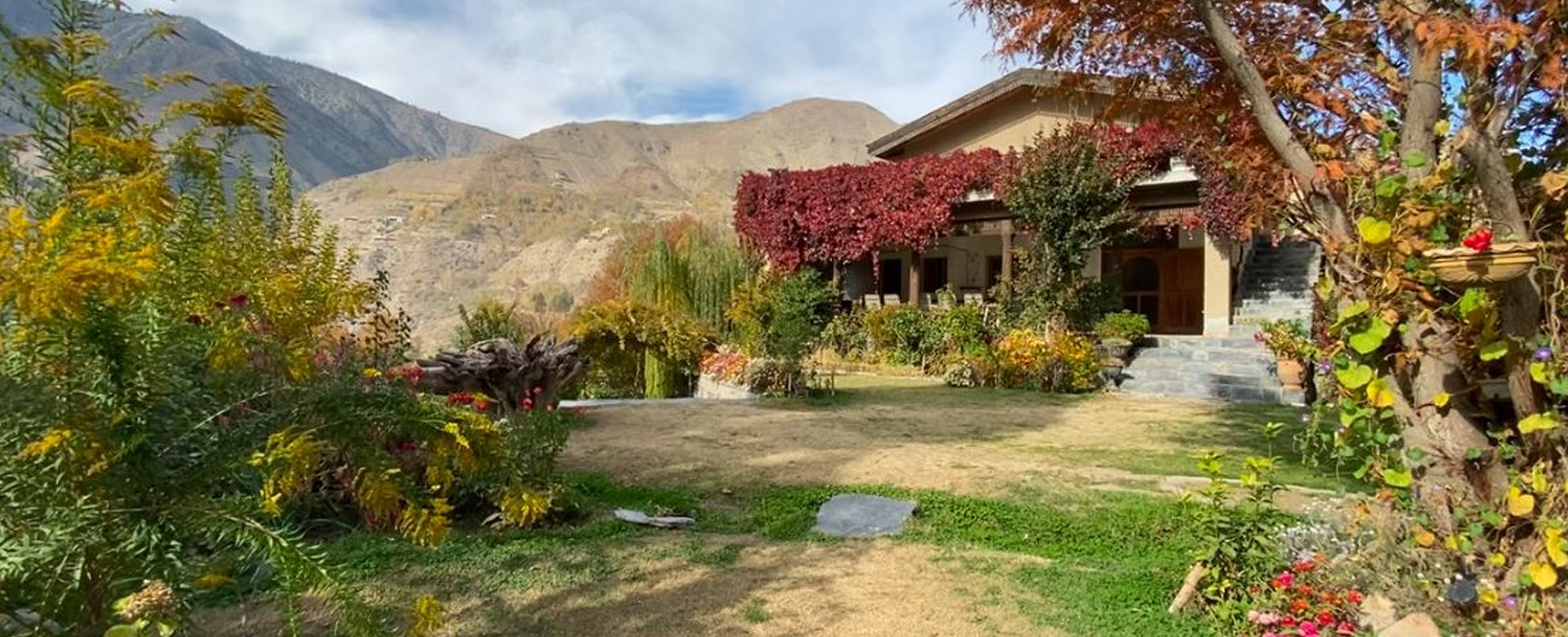Ayun Fort: A 100-year-old legacy in the heart of Chitral

In the northernmost corner of Pakistan lies Chitral, a region celebrated for its stunning landscapes and timeless charm. But for those who venture beyond its well-trodden paths, a secret awaits — Ayun Valley, the heart of Chitral and a living tapestry of history, culture, and natural beauty.
Reaching Ayun is an adventure in itself. An eight-hour drive from Rawalpindi along scenic highways brings you to Lowari Tunnel. From here, it’s a two-hour journey into a world where sparkling springs, towering mountains, and lush orchards create a haven that feels untouched by time.
But Ayun is more than just a scenic valley — it's a gateway to the mystical Kalash region and a treasure trove of stories waiting to be uncovered.
As you approach Ayun, the sight of tiny homes scattered along the slopes of the Hindu Kush mountains greets you. The road winds its way through towering peaks, and while the journey may seem daunting, especially under the veil of night, it has a magic all its own.

The darkness sparkles with starlight, the kind that makes you pause, breathe, and marvel at the romance of nature’s quiet grandeur.
At the heart of this valley stands the Ayun Fort, a 100-year-old relic that whispers of Chitral’s royal past. Once a stronghold of power and tradition, the fort is now a guesthouse where history comes alive for curious travellers. Its wooden beams, grand halls, and serene courtyards hold tales of a family whose lineage shaped the region’s destiny.
From Herat to Chitral: legacy of the rulers
Shuja-ul-Mulk, the last ruler of Chitral, entrusted Ayun’s lands, known as Balawasht, to his youngest son. However, now a days, his grandson, Maqsood ul Mulk and his son Ammar-ul-Mulk, are the custodians of this historic landmark.
Together, they’ve turned Ayun Fort into a space that not only preserves their family’s legacy but also welcomes the tourists to experience it.

In an exclusive conversation, Maqsood shares the fort’s incredible story. "Our family ruled Chitral for centuries before Pakistan’s creation," he says, his voice tinged with pride. "Our roots trace back to Amir Timur, who journeyed from Herat to Chitral, married into the local community, and spent his life here, This fort and the valley it overlooks are part of that heritage, passed down through generations, including my father, who inherited the lands of Ayun as part of this timeless heritage."
Maqsood shared more about the region’s rich history, explaining that before Pakistan's creation, the land was home to many small princely states, with Chitral being one of them.

"Our family’s legacy is intricately tied to this region," he shared. "You’ll find several administrative and royal forts here that are linked to members of my family. Initially, my family lived in the Grand Chitral Fort, where my father was married. In 1920, he moved to this fort in Ayun Valley with my mother, entrusted with the responsibility of settling this land and nurturing the community here."
Folklore of Tirich Mir: tales of fairies and djinns
The fort also offers a spectacular view of Tirich Mir, the tallest peak in the Hindu Kush mountain range, rising 7,708 metres above sea level.
This majestic peak, first climbed by a Norwegian mountaineer in 1950, is steeped in local folklore, with tales of fairies and djinns said to reside on its summit.

For those adventurous enough, reaching Tirich Mir’s base camp from Ayun can take over eight hours, but the journey is one of unforgettable beauty.
Countess of Ross and Ayun Fort’s oldest, biggest trees
The fort’s garden is another testament to the region’s charm, boasting some of the tallest and oldest trees in the world. Among these is a giant sequoia, a gift from the Countess of Ross, a family friend residing in Ireland. Maqsood remarked: "These trees are legendary in California, where they grow so large that tunnels are carved through them, allowing cars to pass. While the sequoia here is still young, it’s growing well and will eventually become just as magnificent."
Maqsood shared another fascinating tale, revealing that his friend, the Countess of Ross, owns a castle in Ireland with a sprawling 22-acre garden, a small part of which she has dedicated to "Chitral."
This unique friendship often sees the exchange of rare trees as gifts, bridging their worlds through nature.
Among the botanical treasures at Ayun Fort is the Ginkgo Biloba, considered one of the oldest tree species in the world. Legend has it that steeping its leaves in water and drinking it is said to enhance longevity — a belief that adds a mystical charm to this ancient tree.
Another gem in the garden is the Weeping Willow, known locally as Baid-e-Majnoon in Persian.

Maqsood reflected on its intriguing story: "The British named it the Weeping Willow, associating it with sorrow, while Persian culture romantically likened its drooping branches to the locks of Majnoon, the famed lover. It’s all a matter of perspective."
In Chitral, these willows are abundant, and some are so massive that their branches stretch far across the ground, creating an enchanting and surreal landscape.
Honouring the past: the crown and the nation
The 100-year-old structure, now a charming guest house, once stood as a formidable fort, housing 80 residents and serving as a temporary shelter for travellers. Encircled by tall walls, it was a testament to its era. However, in 2002, the walls were taken down.
When Geo Digital asked Ammar-ul-Mulk about this decision, he explained: "This region is seismically active and quite dangerous. The fort’s mud-built walls had weakened over time, and we feared they might collapse. To ensure the safety of our guests and allow them to fully enjoy the natural beauty surrounding the fort, we decided to bring the walls down."

Today, the guest house boasts six rooms, retaining much of the original craftsmanship in its wooden beams and stone carvings — hallmarks of Chitral’s rich cultural heritage.
Ammar added: "We’ve preserved most of the old pillars and décor to keep the past alive in our present. During an excavation here, we discovered two ancient pots that now adorn our dining hall. The glass panel above the dining table reflects the mountains, offering a breathtaking view even when you're indoors. Everywhere you look, you’re surrounded by the grandeur of the peaks."
Speaking of their family's connection to Pakistan, Ammar and his father expressed pride in their ancestors' decision to join the nation.
"It was Quaid-e-Azam’s insistence and efforts that convinced our family to become a part of Pakistan. We take immense pride in that decision because, had it not been made, this region might have been part of Afghanistan today, with its people enduring far more challenging circumstances."
As you explore Ayun Fort, it’s impossible not to feel the weight of history around you. The fort stands as a living testament to resilience, its walls imbued with memories of a regal past. Outside, the valley stretches out in all its glory, with vibrant green fields, gushing streams, and the ever-present mountains standing guard.




